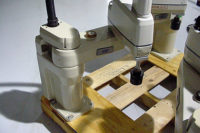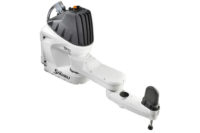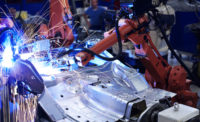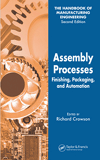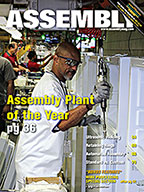German Automation Firms Forecast Record Year

At its assembly plant in Munich, Germany, MTU Aero Engines has developed an automated production process that can operate autonomously for 66 hours. Photo courtesy MTU Aero Engines
FRANKFURT, Germany—German suppliers of robotics and automation technology are forecasting record-high sales of 16.2 billion euros in 2023, an increase in sales of 13 percent. In 2022, the industry recorded sales of 14.3 billion euros, and increase of 5 percent.
This year’s sales are expected to significantly exceed the previous record high of 15.1 billion euros, which was set in 2018.
“The robotics and automation industry is on course for growth,” says Frank Konrad, chairman of VDMA Robotics + Automation, a German trade association. “Full order books are currently shaping the market situation. During the pandemic, providers have built up large order books, [and] easing bottlenecks in the supply chains are now [reducing that backlog] step by step. Our industry is finally leaving the pandemic behind.”
One automation sector did particularly well in 2022: Sales of industrial image processing technology reached 3.4 billion euros last year, an increase of 11 percent. In addition, sales of integrated assembly systems totaled 7.4 billion euros, an increase of 5 percent, while sales of robotics hit 3.5 billion euros, an increase of 1 percent.
For 2023, sales of image processing technology are expected to reach 3.6 billion euros last year, an increase of 7 percent; sales of integrated assembly systems are forecast to hit 8.7 billion euros, an increase of 17 percent; and sales of robotics will total 3.9 billion euros, an increase of 3.9 percent.
According to the International Robotics Federation, around half a million robots were installed worldwide in 2022, about twice as many as seven years earlier. The international race to automate is reflected in the robot density of national economies: With 322 robots per 10,000 manufacturing employees in 2021, China overtook the United States, with a density of 274 units per 10,000 manufacturing employees.
According to a current forecast by VDMA, China will next overtake Germany in terms of robot density this year.
In the future, automation will play a key role both in manufacturing and in the service sector in Germany. Demand for robotics and automation in manufacturing is being driven by several trends, such as a skilled labor shortage and increasing demand for electric vehicles and renewable energy technology.Looking for a reprint of this article?
From high-res PDFs to custom plaques, order your copy today!




